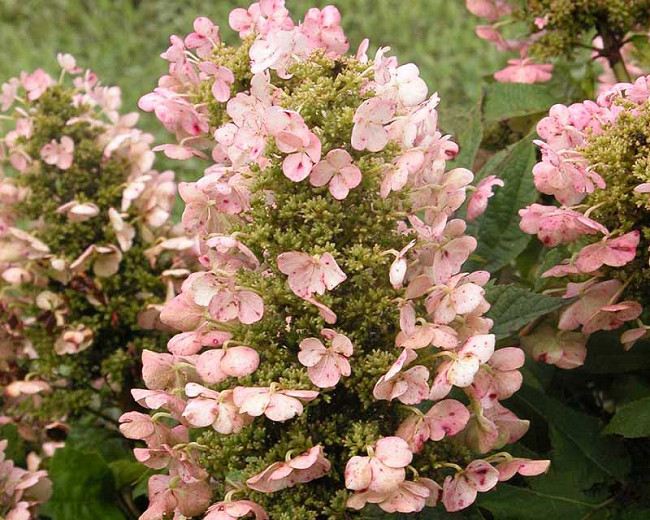The Munchkin Hydrangea: The Perfect Smallspace Plant
The Munchkin Hydrangea: The Perfect Small Space Plant
If you're looking for a beautiful and easy-to-grow hydrangea that's perfect for a small space, then the Munchkin hydrangea is the perfect choice for you. These compact shrubs are only about 3 feet tall and wide, making them ideal for patios, balconies, and even small gardens.
Munchkin hydrangeas are also very versatile. They can be grown in full sun or partial shade, and they thrive in a variety of soil conditions. They're also relatively drought-tolerant, so you won't have to worry about watering them too often.
In addition to their small size and easy care, Munchkin hydrangeas are also very floriferous. They produce large, showy blooms in a variety of colors, including blue, pink, purple, and white. The blooms typically appear in late spring or early summer, and they can last for several weeks.
If you're looking for a beautiful and low-maintenance hydrangea for your small space, then the Munchkin hydrangea is the perfect choice for you.
Here are some of the benefits of growing Munchkin hydrangeas:
- They are compact, making them ideal for small spaces.
- They are easy to care for, even for beginner gardeners.
- They are drought-tolerant, so you won't have to worry about watering them too often.
- They are floriferous, producing large, showy blooms.
- They come in a variety of colors, so you can choose one that matches your décor.
Here are some tips for growing Munchkin hydrangeas:
- Plant them in full sun or partial shade.
- Water them regularly, but don't overwater them.
- Fertilize them once a year in the spring.
- Deadhead the blooms to encourage new growth.
Here are some common problems that Munchkin hydrangeas may experience:
- Leaf spot: This is a fungal disease that can cause brown spots on the leaves. To treat it, remove the affected leaves and apply a fungicide.
- Powdery mildew: This is another fungal disease that can cause a white powdery coating on the leaves. To treat it, remove the affected leaves and apply a fungicide.
- Aphids: These small insects can suck the sap from the leaves, causing them to wilt and yellow. To control aphids, spray the plants with insecticidal soap or neem oil.
With proper care, Munchkin hydrangeas can thrive for many years. So if you're looking for a beautiful and low-maintenance hydrangea for your small space, then the Munchkin hydrangea is the perfect choice for you.
Munchkin hydrangeas are a popular choice for gardeners because they are compact and easy to care for. They are also known for their beautiful blooms, which come in a variety of colors. If you are looking for a hydrangea that is perfect for small spaces, then a munchkin hydrangea is a great option.
To learn more about munchkin hydrangeas, I recommend visiting the . This website has a wealth of information about these plants, including care tips, planting instructions, and a gallery of photos.
FAQ of munchkin hydrangea
What is a munchkin hydrangea?
A munchkin hydrangea is a dwarf variety of oakleaf hydrangea (Hydrangea quercifolia). It is a compact, well-rounded shrub that grows to be only 3-4 feet tall and wide. Munchkin hydrangeas have large, conical panicles of white flowers that gradually turn pink as they mature. The foliage is also attractive, with deeply-lobed, oak-shaped leaves that turn mahogany-red in the fall.
What are the benefits of planting a munchkin hydrangea?
There are many benefits to planting a munchkin hydrangea. These shrubs are:
- Compact and easy to care for, making them ideal for small gardens
- Drought-tolerant and relatively pest-free
- Showy flowers that bloom for a long period of time
- Beautiful fall foliage
How do I care for a munchkin hydrangea?
Munchkin hydrangeas are relatively easy to care for. They need full sun to partial shade and well-drained soil. Water them regularly, especially during the first year after planting. Mulch around the base of the shrub to help retain moisture and suppress weeds. Fertilize once in early spring with a balanced fertilizer.
What are the most common problems with munchkin hydrangeas?
The most common problems with munchkin hydrangeas are:
- Leaf scorch, which can occur if the plant is not watered enough
- Powdery mildew, which can be treated with a fungicide
- Aphids, which can be controlled with insecticidal soap or neem oil
What is the difference between munchkin and pee wee hydrangea?
The main difference between munchkin and pee wee hydrangea is their size. Munchkin hydrangeas grow to be about 3-4 feet tall and wide, while pee wee hydrangeas can grow to be up to 5 feet tall and wide. Munchkin hydrangeas also have smaller flowers than pee wee hydrangeas.



Post a Comment for "The Munchkin Hydrangea: The Perfect Smallspace Plant"